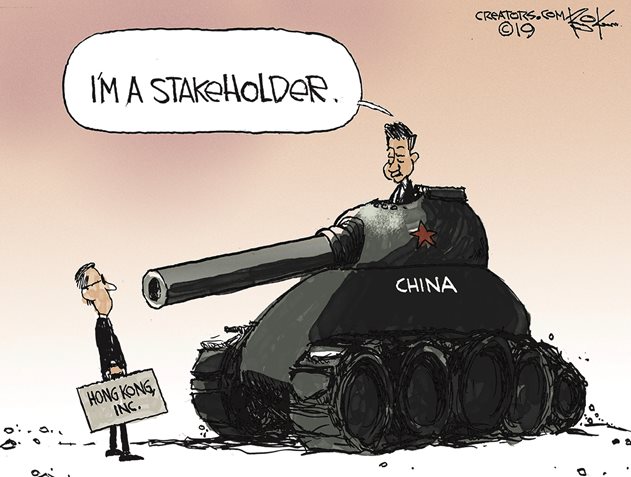This is an old revision of the document!
Context of the Organization... and "Interested Parties"
While poorly described in ISO 9001:2015 & AS 9100:2016, the “Context of the Organization”… and “Interested Parties” actually involve cultural relativism. Cultural relativism is the idea that a person's beliefs, values, and practices should be understood based on that person's own culture, rather than be judged against the criteria of another.
This means that interpretation of the requirements of ISO 9001:2015 & AS 9100:2016 changes when crossing cultural boundaries. Or, stated another way, interpretation of the requirements of ISO 9001:2015 & AS 9100:2016 is “country dependent”.
This is why there are 2 separate “official” interpretations for ISO 9001:2015… one from ISO, and another from each country (where determined by that country to be necessary). For example:
Unfortunately, this allows for different countries to effectively edit (i.e., re-write) ISO 9001:2015 through their “official” interpretations.
And there is a 3rd official “clarifications” (i.e., interpretations) document from IAQG for AS 9100: "IAQG AS 9100:2016 Series Clarifications"
When reading ISO 9001:2015 & AS 9100:2016, sec. 4.2 “Understanding the needs and expectations of interested parties”, the interpretation varies depending upon whether the country is communist, socialist (i.e., closed or restricted economies) or a free society with a free market economy.
This accounts for the following definition being completely incongruent with businesses operating in a free society with a free-market economy (the “Example” immediately below the definition was added by TC 176 to the definition provided in “ISO/IEC Directives, Part 1, Consolidated ISO Supplement - Procedures specific to ISO” (Fifth edition, 2014), Annex SL).
ISO 9000:2015, sec. 3.2.3:
interested party / stakeholder
person or organization that can affect, be affected by, or perceive itself to be affected by a decision or activity
EXAMPLE Customers, owners, people in an organization, providers, bankers, regulators, unions, partners or society that can include competitors or opposing pressure groups.
In China, where more than ⅓ of all ISO 9001:2015 certifications have been issued, the “Context of the Organization” and its relationship with “Interested Parties / Stakeholders” has a very different meaning than in the USA!

Fortunately, ISO 9001:2015, sec. 4.2b, effectively re-defines an “interested party” through limiting them to a “party” invoking quality-related requirements, as shown below:
4.2 Understanding the Needs and Expectations of Interested Parties
Due to their effect or potential effect on the organization’s ability to consistently provide products and services that meet customer and applicable statutory and regulatory requirements, the organization shall determine:
a. the interested parties that are relevant to the quality management system;
b. the requirements of these interested parties that are relevant to the quality management system.
The organization shall monitor and review information about these interested parties and their relevant requirements.
ISO 9001:2015, Annex A.3 further clarifies this limitation stating:
“There is no requirement in this International Standard for the organization to consider interested parties where it has decided that those parties are not relevant to its quality management system. It is for the organization to decide if a particular requirement of a relevant interested party is relevant to its quality management system.”
Consequently, ISO 9001:2015, Annex A.3 makes this “requirement” extremely simple for an organization to comply with… because it empowers the organization to decide which requirements from an “interested party” are applicable to its quality management system.
Additional AS 9100:2016 (Rev. D) Requirement
Unlike ISO 9001:2015 (which does not require a document identifying “interested parties”), AS 9100:2016 (Rev. D) requires “the organization” to document a “general description” of the interested parties.
AS 9100:2016, sec. 4.4.2 states:
The organization shall establish and maintain documented information that includes:
− a general description of relevant interested parties (see 4.2 a);
This requirement is typically interpreted as the “general description” consisting of the identity of the “interested party” and their requirements (Ref. AS 9100:2016, sec. 4.2).
An example of “Interested Parties” for a defense contractor might include:
| Interested Party | Requirement(s) |
|---|---|
| Customers | Defined on a “case-by-case” basis in documented “contracts” and/or “Purchase Orders”. |
| U.S. Department of State | Defined in the “International Traffic in Arms Regulations” (22 CFR SubChapter M, Parts 120-130), when applicable. |
| U.S. Department of Defense | Defined in the “Federal Acquisition Regulations” (FARs) & “Defense Federal Acquisition Regulations” (DFARs), when applicable. |
An example of “Interested Parties” for a company visiting ports (e.g., performing inspections of, or transferring goods to/from, barges, vessels, shore tanks, etc.) might include:
| Interested Party | Requirement(s) |
|---|---|
| Customers | Defined on a “case-by-case” basis in documented “nominations” received via e-mail, “contracts” and/or “Purchase Orders”. |
| Transportation Security Administration (TSA) | Defined in the "Maritime Transportation Security Act of 2002" (PUBLIC LAW 107–295—NOV. 25, 2002). The primary applicable, relevant requirement is for Inspectors to possess a “Transportation Worker Identification Credential”, also known as TWIC® card, in order to gain entry to port facilities. |
| Port Facilities | Some Ports communicate their “Rules” via e-mail. Other Ports communicate their rules on an “as-needed” or “case-by-case” basis. |
| Vessel owners / captains | Vessel rules / requirements are typically communicated verbally by the vessel crew on a “case-by-case” basis. |
| Barge owners / captains | Barge rules / requirements are communicated by the fleet. Each fleet has different rules - that are typically communicated “as-needed”. |

